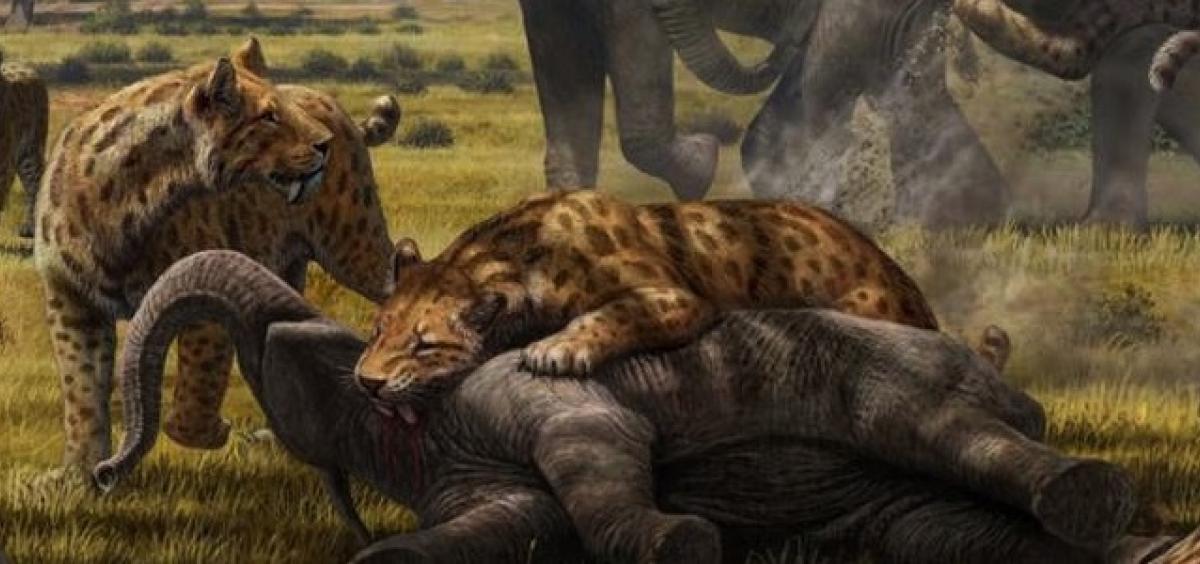
CORVALLIS, Ore. - Our prehistoric ancestors may have had large carnivores - giant lions, sabertooth cats, bears and hyenas up to twice the size of their modern relatives - to thank for an abundance and diversity of plants and wildlife.
Likewise, modern ecosystems, from tropical forests to the American West, may depend on the ability of large carnivores to control grazing animals.
Those are among the conclusions of scientists who used ice-age fossils and historical data from modern surveys of animal populations to investigate the nature of predator-prey relationships. Researchers led by Blaire Van Valkenburgh of UCLA published their findings today in the Proceedings of the National Academy of Sciences. William Ripple, distinguished professor in the Oregon State University College of Forestry, is among the co-authors.
"Large predators can have a major role in limiting their prey and in determining the structure and function of ecosystems," said Ripple. "But scientists have thought that the largest herbivores, such as elephants, were immune from predation. We now know that's not the case, and based on these data from the Pleistocene (the epoch which lasted from about 2.5 million to 11,700 years ago), we now think that large carnivores did limit the large herbivores at that time."
Using Pleistocene fossils, Ripple and his colleagues concluded that juvenile members of large herbivores - such as woolly mammoths and giant bison, sloths and camels -- were well within the size range of prey available to the carnivores that roamed the landscape.
"Imagine a large population of herbivores: If they had not been under control, they could have eaten themselves out of house and home," Ripple added. "It would not have been sustainable."
The researchers synthesized data on predator and prey body masses, historical data on group size in large carnivores and paleontological data on ancient carnivores. Their analysis of data on more than 50,000 individual kills in the wild enabled them to predict the probable prey sizes of the extinct predators using a mathematical model derived from modern data. They estimated the body mass of young mammoths and mastodons using data on the relationship between shoulder height and age and, for living elephants, shoulder height and mass.
Today in Africa, lions do prey on young elephants, but since lions have declined dramatically in pride size and geographic range, they are not thought to provide an ecologically effective control on elephant populations. Safari hunting parties and explorers recorded prides containing an average of 24 and as many as 40 animals in the late 1800s, but today, lion prides have dwindled to an average of nine animals, based a recent analysis of 27 African reserves.
In African national parks, elephants can be destructive to the landscape, said Ripple, knocking down trees and tearing up vegetation.
"There's evidence that larger prides had more success at killing elephants," said Ripple. "Sometimes a group of lions will run down a fairly young elephant, some jumping on its back and others nipping at its sides. They'll just wear it out and bring it down. We tallied 173 elephant kills by lions and hyenas, and 75 percent of these elephants were younger than nine years old."
The findings have implications for modern wildlife management policies, the authors said. "Recreating these (Pleistocene) communities is not possible, but their record of success compels us to maintain the diversity we have and rebuild it where feasible (e.g., rewilding)," they write.
"If a manager's goal is to have sustainable predator prey relationships in highly functional ecosystems, it can be important to have predators at ecologically effective population sizes," Ripple said.
In addition to Van Valkenburgh and Ripple, co-authors include Matthew Hayward, a senior lecturer in conservation with the UK's Bangor University College of Natural Sciences; Carlo Meloro, a vertebrate palaeontologist with the UK's Liverpool John Moores University; and V. Louise Roth, professor of biology at Duke University.
Bill Ripple, 541-737-3056
Click photos to see a full-size version. Right click and save image to download.